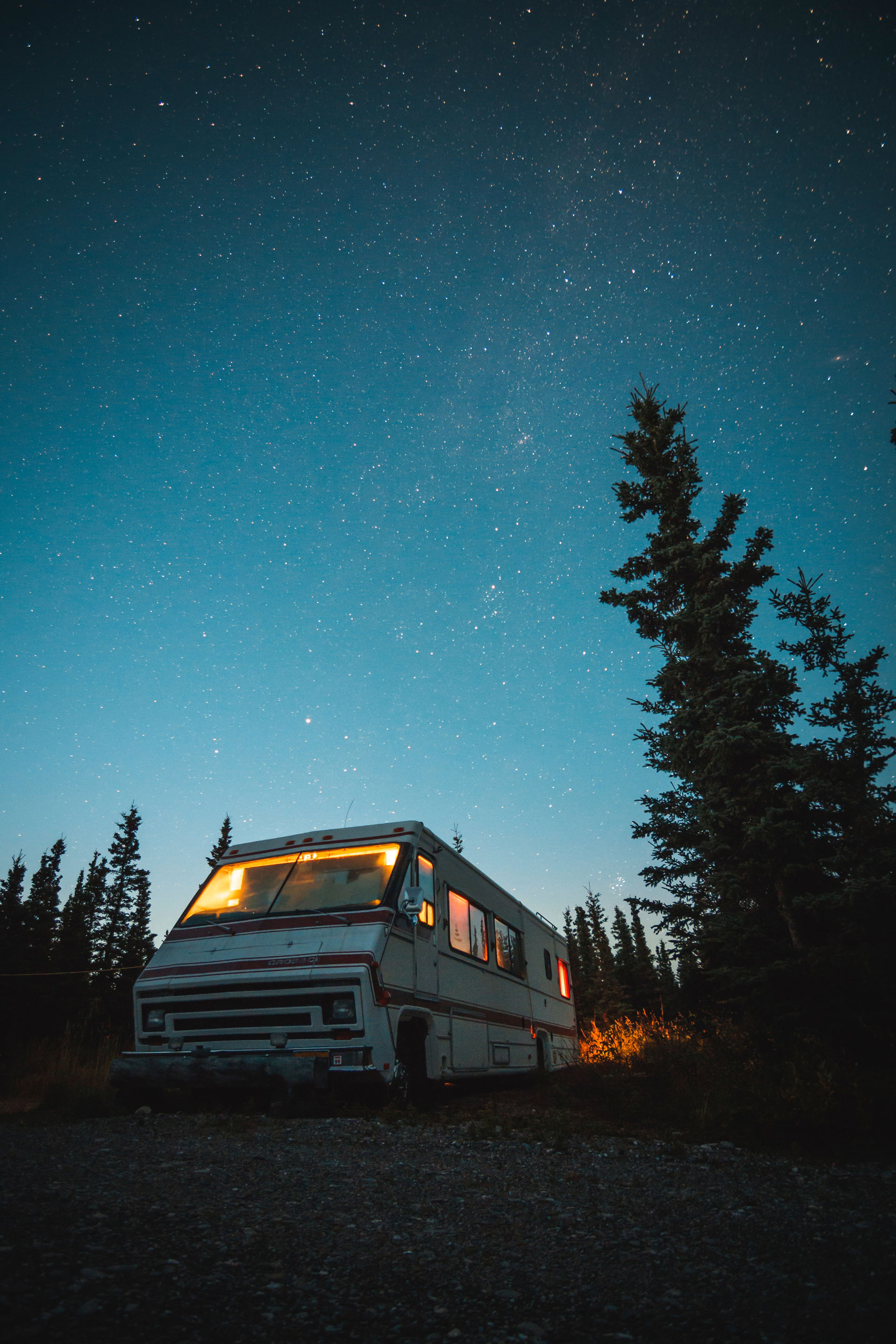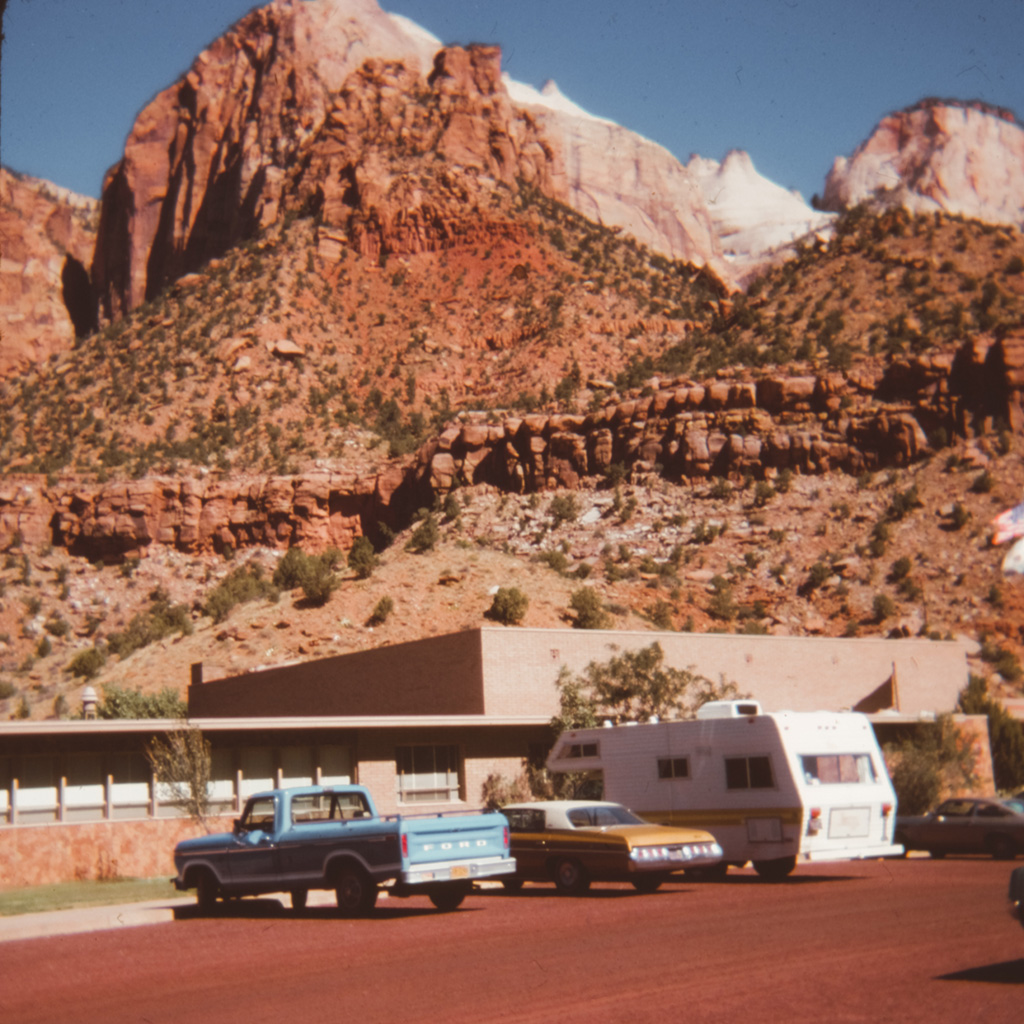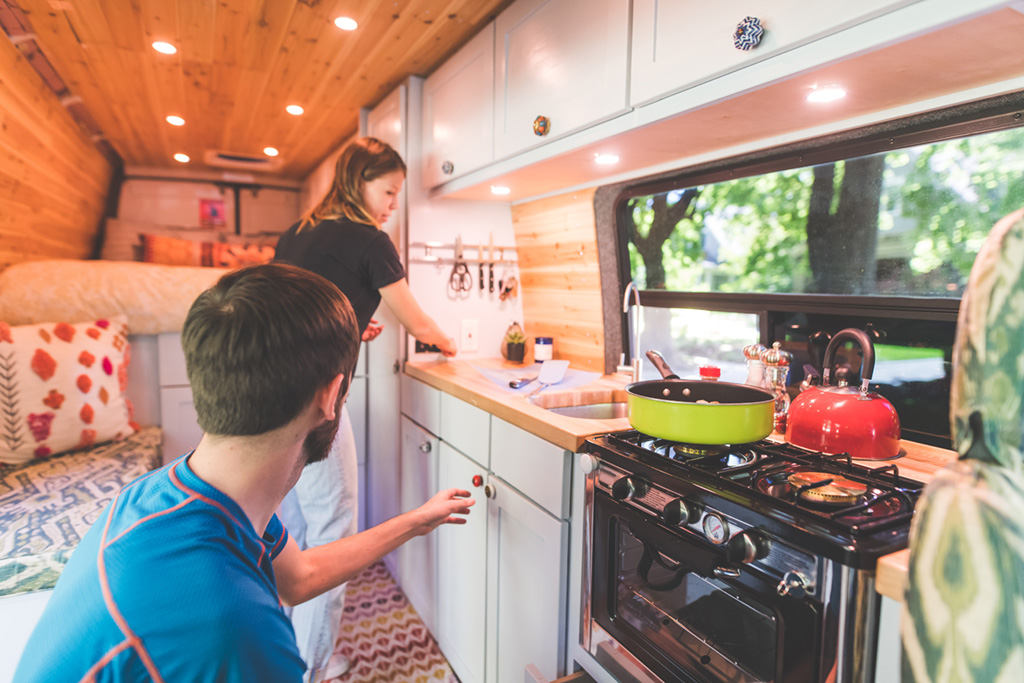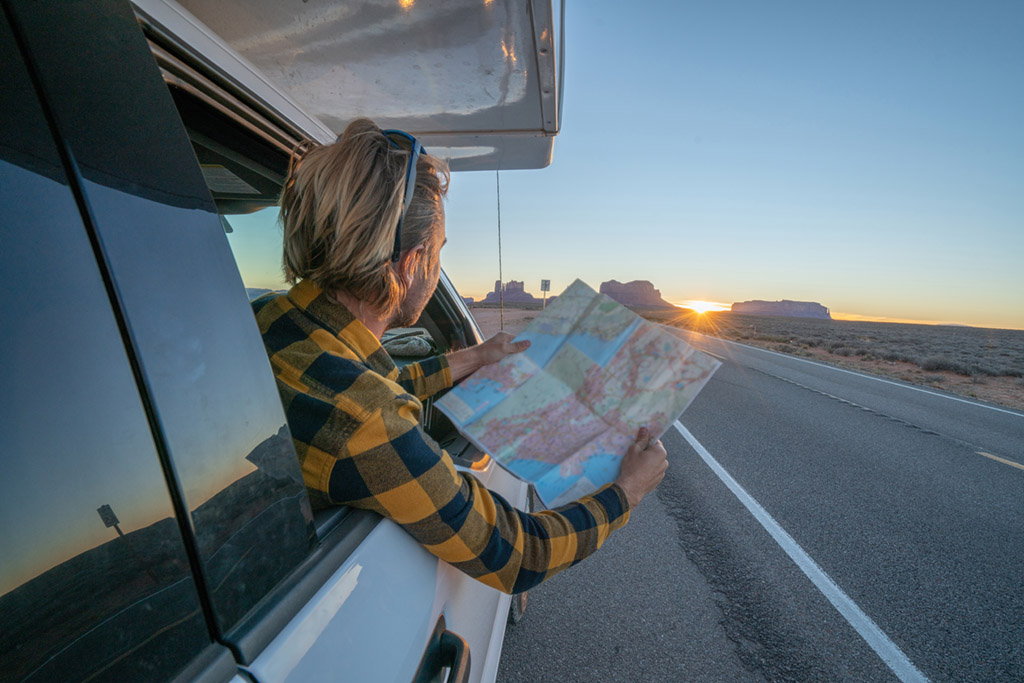
The RV Adventure
America is made for exploring. It’s been a truth for centuries, and we’re always reminded of it at this time of year.
However, our ability to travel was greatly hampered in 2020 by COVID-19. Ever resourceful, many Americans turned to a time-tested friend to experience the great outdoors: the recreational vehicle. Providing convenience, luxury, and independence, the RV is the ultimate way to see the country.
An American Institution

-
1900¬–1930
Recreational vehicles have come in handy since the beginning of the twentieth century, as Americans clamored for a way to see the country’s majesty in comfort. Trailers and mobile homes (the latter being personally modified versions of vehicles) first emerged at the beginning of the twentieth century. -
1930–1960
The first travel trailers were manufactured in the 1930s, but during that decade they were used as homes out of necessity (due to the Great Depression) and then out of practicality by the 1940s, when people realized the benefits of living in such spaces. RVs really boomed in the postwar 1950s, as manufacturers started making them longer and with many more amenities. -
1960–2020
America’s love affair with RVs has continued to this day. Between 1980 and 2000, sales of RVs more than doubled, thanks in part to the 1976 HUD Code, which established standards for the construction of mobile homes—essentially putting them on par with standard homes as far as safety requirements are concerned. 2020
When COVID-19 hit, RV travel became a much-welcomed option for many people. In North America, over 500,000 of these vehicles were bought in 2020, and sales were even stronger as the year went on: December 2020 marked an almost 50 percent increase from the same time in 2019. In a year that was heavily impacted by the pandemic, RV manufacturing and sales were two of the few industries that saw increased business, by almost 9 percent.
Today’s RV

-
Bunk beds
One of the primary benefits of RVing is traveling as a family or group, and the increased availability of bunk areas has made this easier and more comfortable. -
Outdoor kitchens
Many RVs have indoor kitchens, but the latest trend is to have an option built on the outside as well, so you can pop it open and cook in the great outdoors. -
Fireplaces
A luxury amenity for sure, a fireplace in your camper is also practical, since campsites can get cold at night. Spacious rear living areas
When you shop for an RV, prepare to be impressed. It’s jaw-dropping to discover just how many give off the vibe of a luxury home, from leather recliners to granite countertops to top-notch sound systems.-
Purchase or rent?
Do you want to get a taste of the RV life or commit to it? There are ample opportunities to rent an RV through places like Cruise America and popular peer-to-peer options such as Outdoorsy and RVshare. Daily rental prices will vary based on the time of year and the size of the RV, and other charges (such as mileage) also need to be factored in.
If you decide to buy your own new RV, they can range in price from around $6,000 to $100,000 or more, depending on the size, materials, and amenities. But the RV, much like a vacation home, can pay for itself—you can make good money by renting it out at a campground when not using it yourself. -
Drive it or tow it?
There are two basic kinds of recreational vehicles: ones you can drive, and ones that serve as trailers—and almost nine out of ten RVers opt for the latter. The primary consideration for trailers is the size, which includes factoring in having a vehicle with enough horsepower to tow it for long distances since RVs can weigh up to fifteen tons.
Either way, you’ll need to learn how to drive an RV, so you’ll have to practice. If you opt for a trailer version, you’ll also need to learn how to properly hook it up. Keep your RV’s classification in mind as well. The Department of Motor Vehicles (DMV) has very specific definitions for what it considers an RV: Class A (motor homes, the luxury liners of the industry), Class B (camper vans), and Class C (the most popular motorhome with a sleeping area over the cab), as well as a range of travel trailers including lightweight pop-ups, toy haulers, and luxury fifth-wheels. There are lighter options you can pull with a sedan, but most require a large SUV or truck. Fortunately, unless you purchase one that’s over 26,000 pounds (a rarity), you won’t need to get a special license to drive your RV. State laws vary, so make sure to contact your Department of Motor Vehicles office to find out more. -
Shop around.
This will be an important purchase, so make sure to do your research about what you need. Only use dealers with good reviews and reputations, compare prices, and thoroughly inspect (or have an expert do so) the vehicle, even if it’s listed as “as-new.” Before you buy that RV, make sure to invest in an RV inspection. Independent inspectors will search every inch of the motorhome or trailer, which will give you leverage with the price and peace of mind.
Once you’ve purchased your vehicle and get accustomed to it, you’re ready to seek adventure! However, RVs often come with considerations you might not normally think of with your usual vacation.
-
Map your route.
In short, know your distance so you can consider things like refueling. Depending on the size of your vehicle, you’ll likely have to refill much quicker than you think: RVs generally provide 4 to 18 miles per gallon. Also, keep in mind the size of your holding tanks, the water from which is used for drinking, showering, and using the bathroom and will have to be replenished. RVlife.com is a helpful trip-planning app that can help you with every aspect of your journey, from how much gas you’ll use, to roads, bridges, or tunnels to avoid based on the height of your vehicle, to campgrounds and highlights along the way. -
Stock up.
Take advantage of your space. Make sure you have ample food and drink in your RV since you may travel many miles between food/rest stops. Also, be sure to turn your fridge on the day before you stock it, as it takes twenty-four hours for an RV fridge to get cold. And remember that most campgrounds have stores for anything you might have forgotten! -
Plan ahead.
You’ll likely need to make a reservation at your destination, whether it’s an RV campground or a park, as space may be limited (especially with the burgeoning popularity of RVs) and restrictions may apply (some areas have size limits, for example). GoRVing.com is the best place to visit for expert advice, tons of inspiration, a “newbie toolkit” from seasoned RVers, and everything you need to get started on your RV journey—including dealer information and campground availability across the country. In addition, Harvest Hosts is worth a look, as it offers a network of over 2,000 camping sites, including wineries and farms.
It’s estimated that sixty-four million Americans will go RV camping this year, visiting lakes, parks, campgrounds, and beaches across the country. It’s the ultimate way to enjoy the freedom of the open road, allowing you to travel in comfort, on your own terms, as you explore all the country has to offer. Are you ready to experience the RV life?
-
The RV industry has upped its game in recent years, providing a host of Insta-worthy options for buyers depending on the type of travel they are looking for. Some of the more attractive amenities include the following:
Thanks in part to such amenities, people are flocking to RV dealerships and campgrounds in droves, and that can be seen in the industry’s sheer impact. Per the RV Industry Association, RV sales, manufacturing, and travel brings in a whopping $114 billion each year to America’s economy and provides approximately 600,000 jobs across 30,000 businesses.
Hit the Road!

If all this sounds enticing, you’d be right. So how do you get started on your RV adventure? Here are some primary considerations to help you make the right decision for your needs and to make the most of your trips.
For more info, visit GoRVing.com
Share the excitement of the RV experience with friends and family
Up Next:
Getting Back to Nature

Posted on Feb 23, 2021